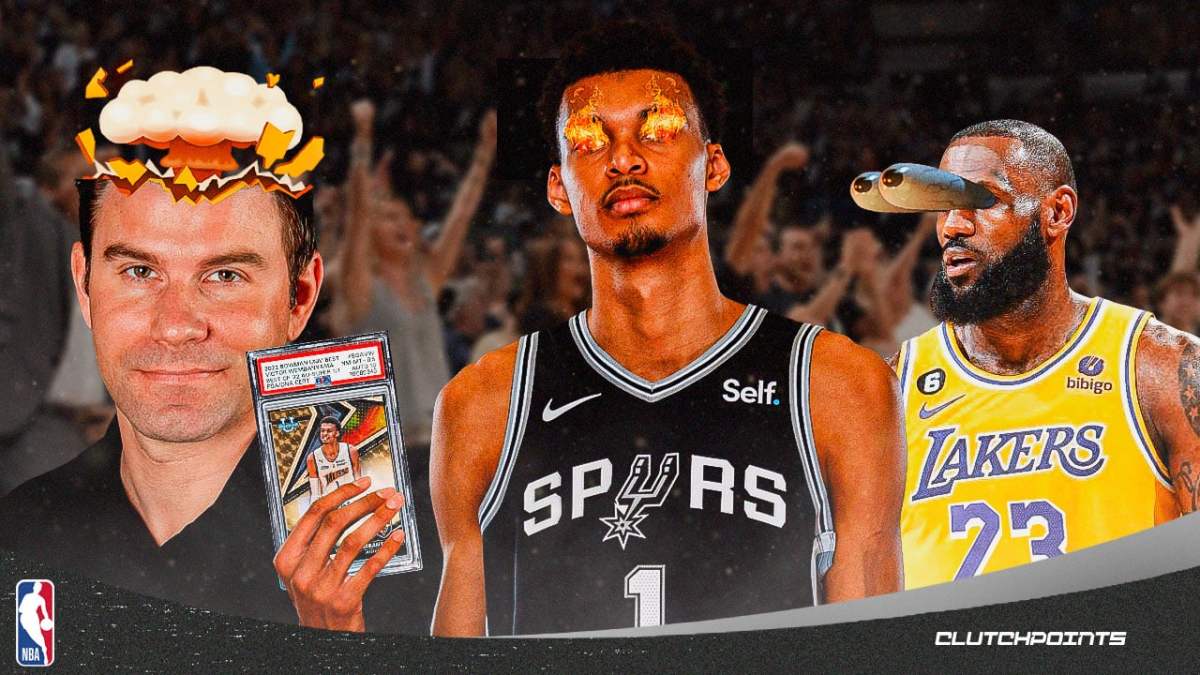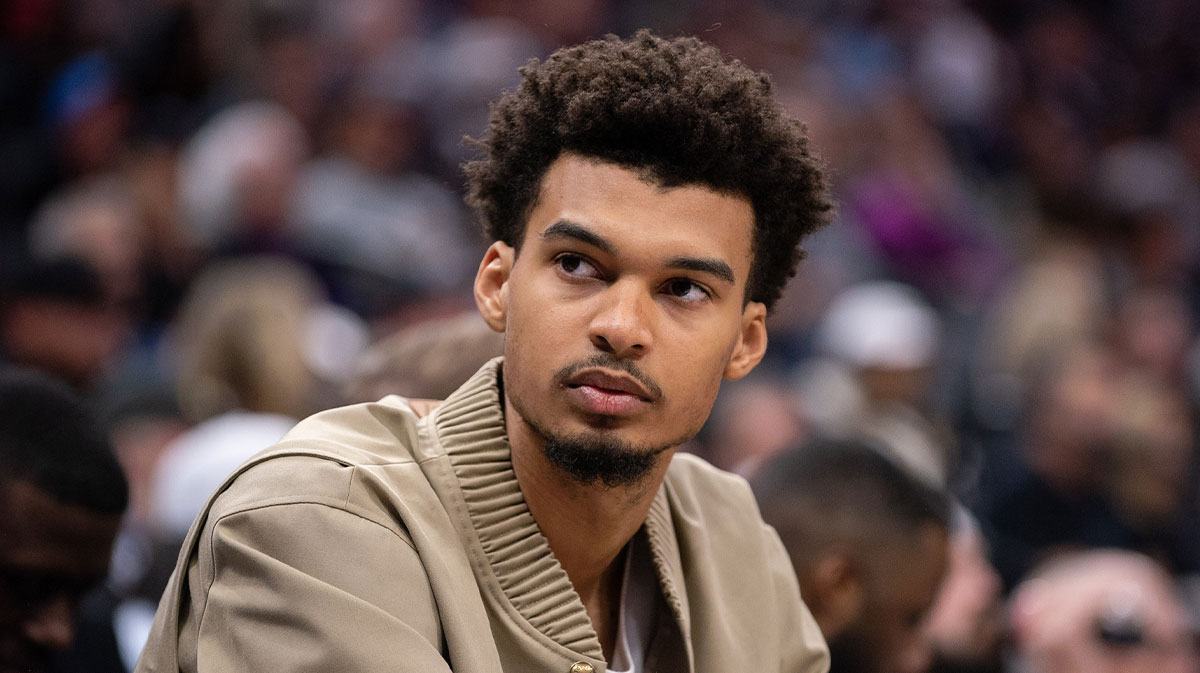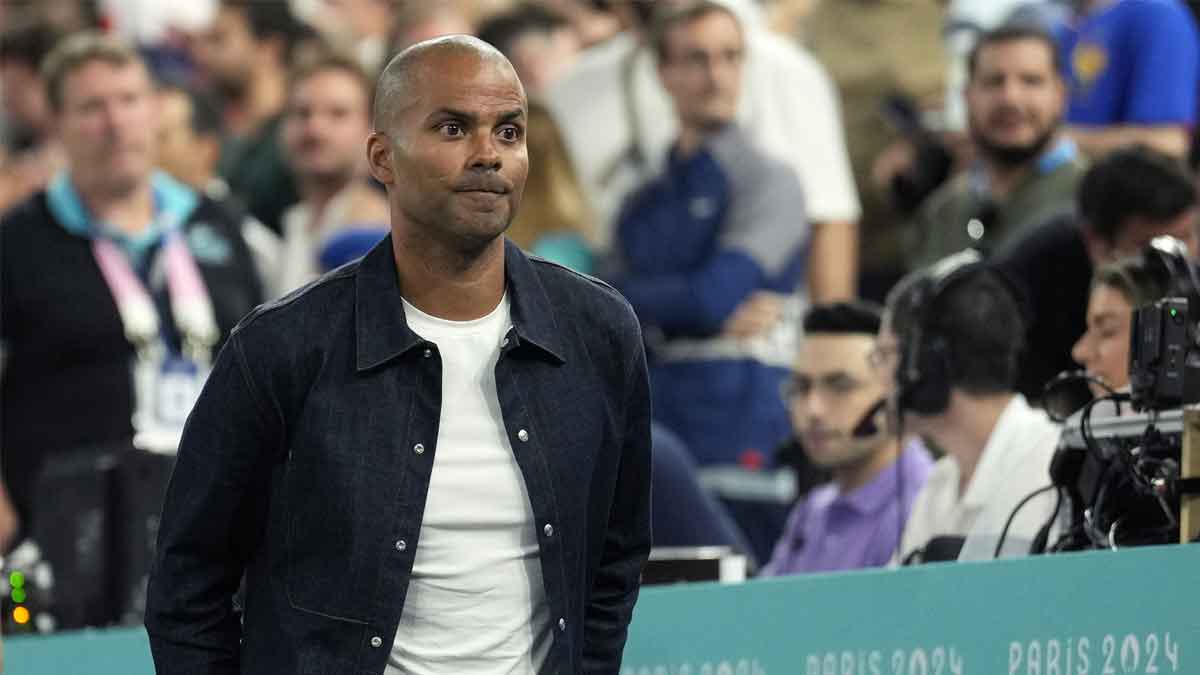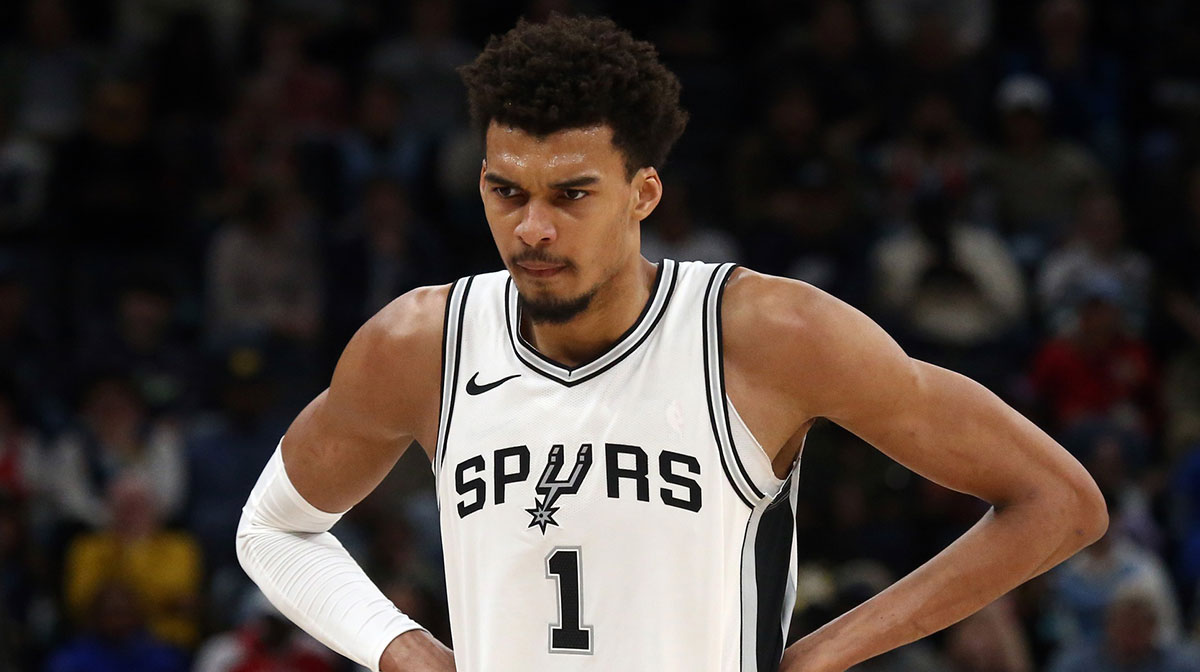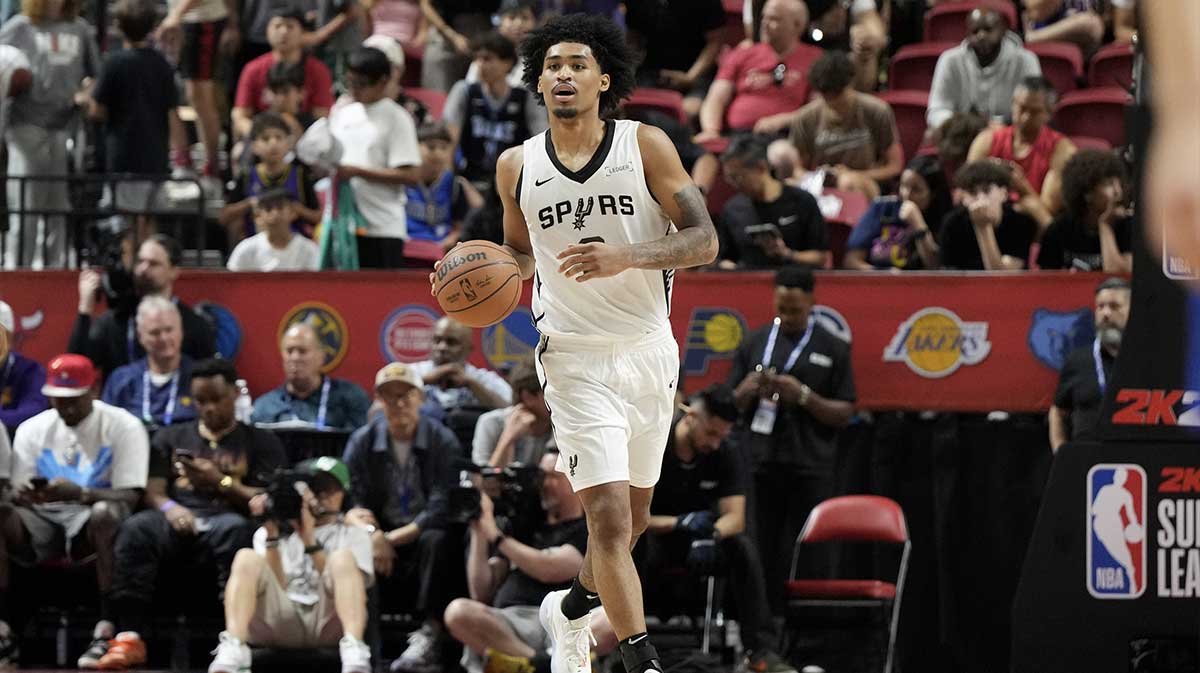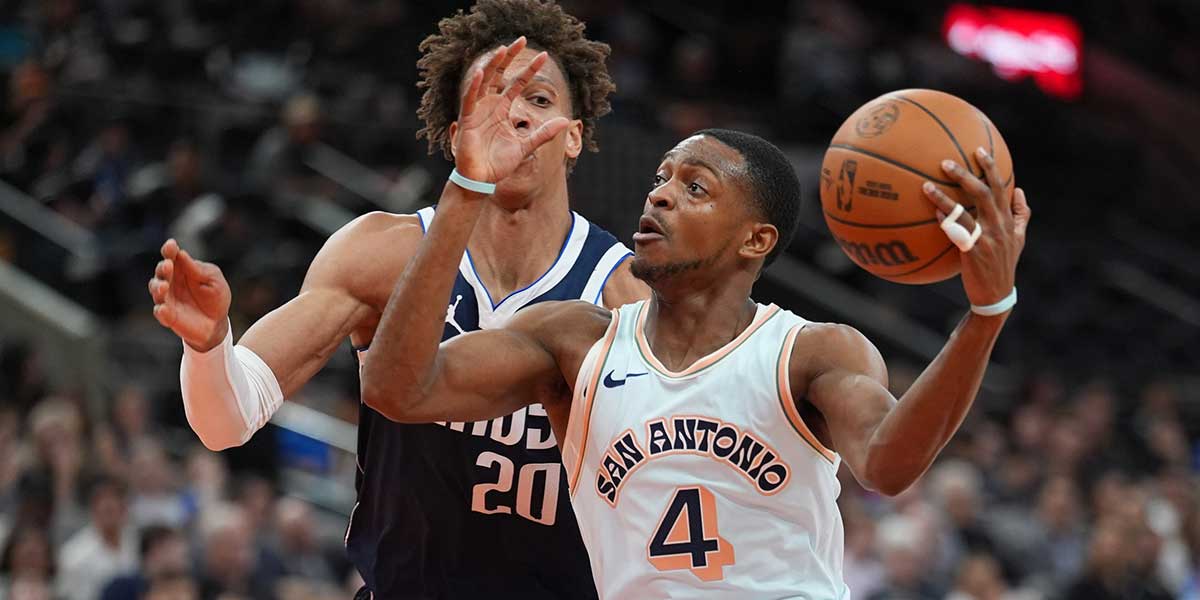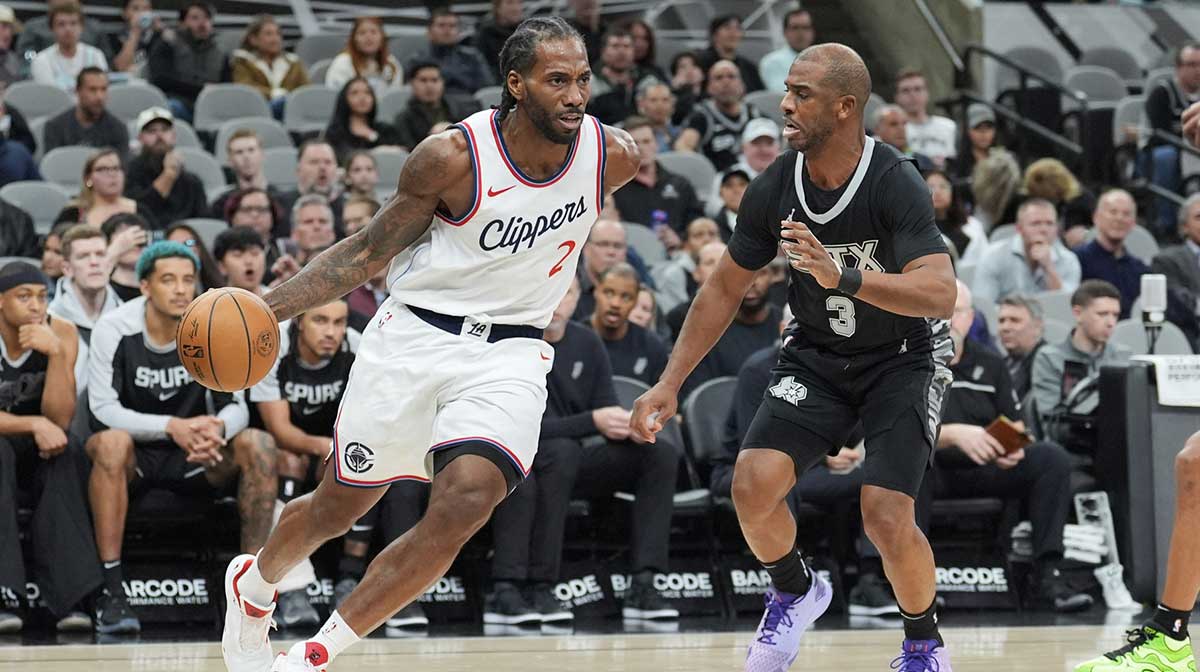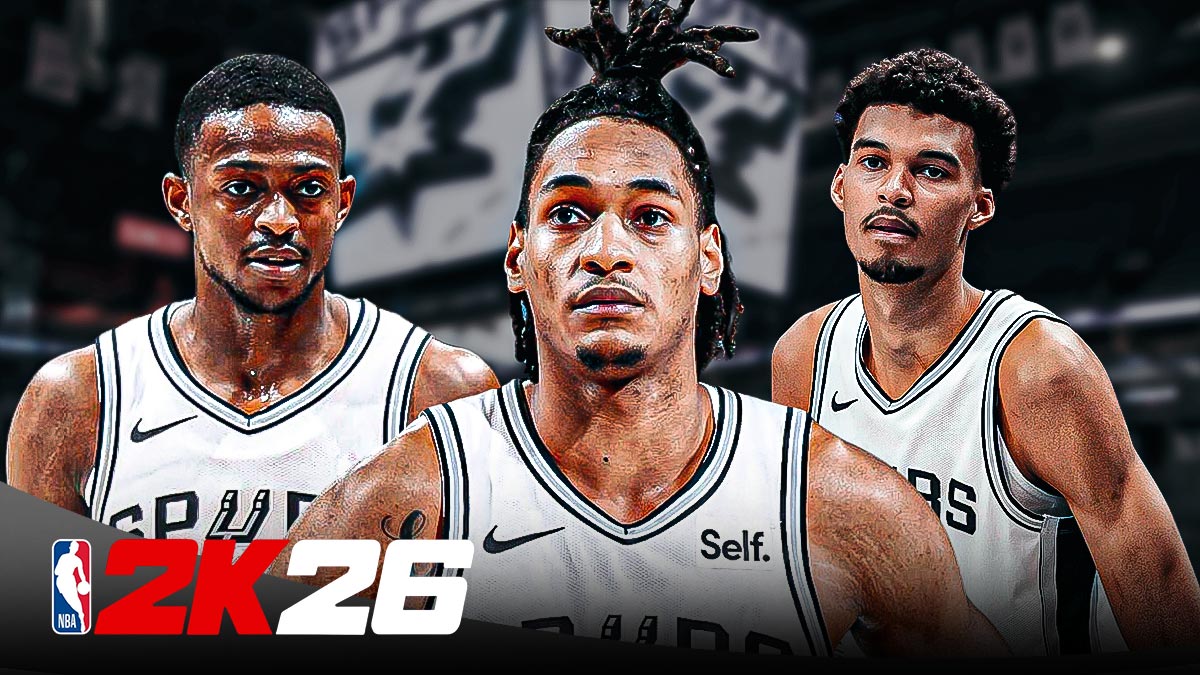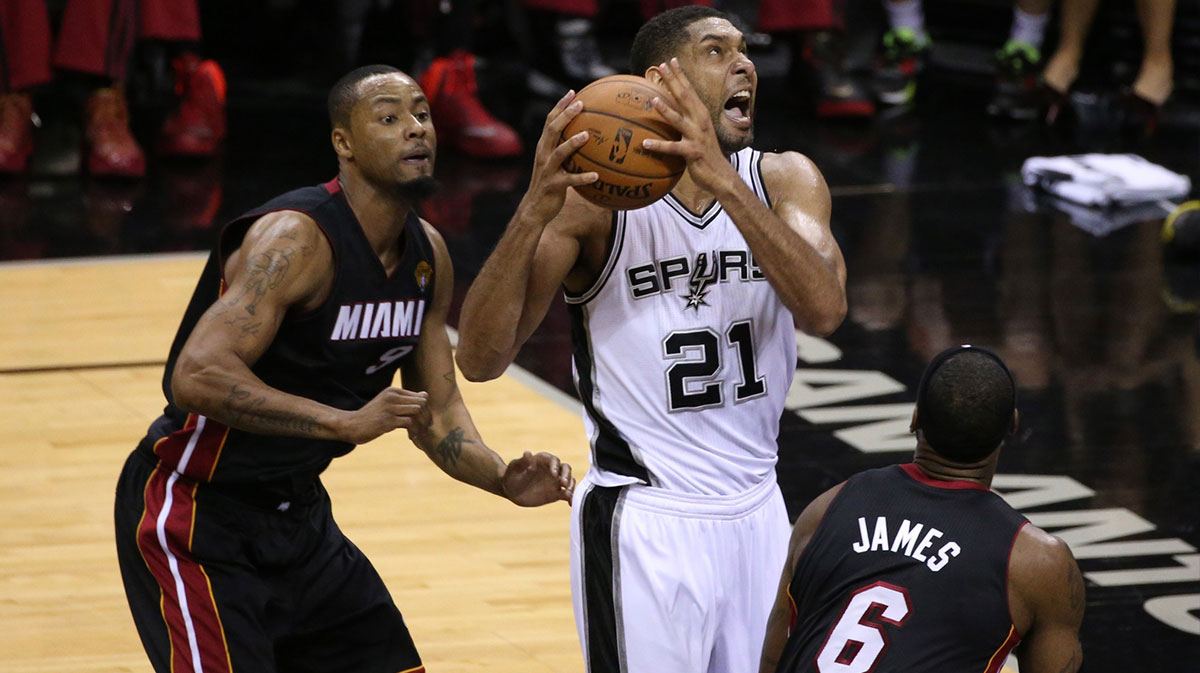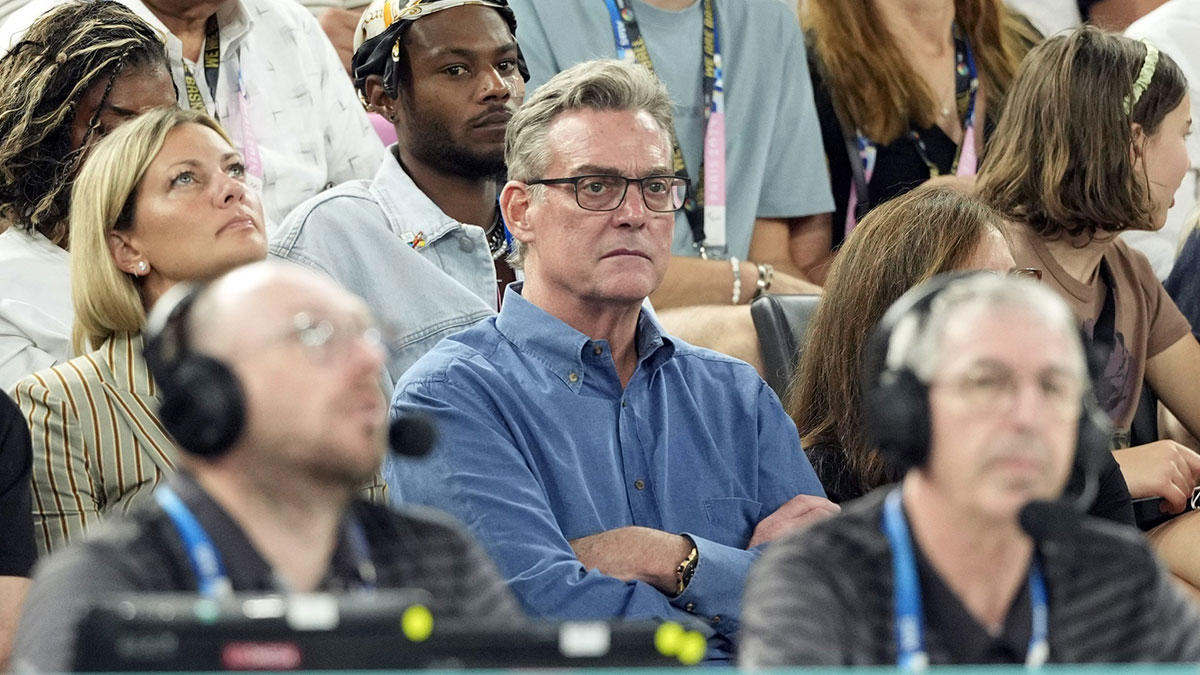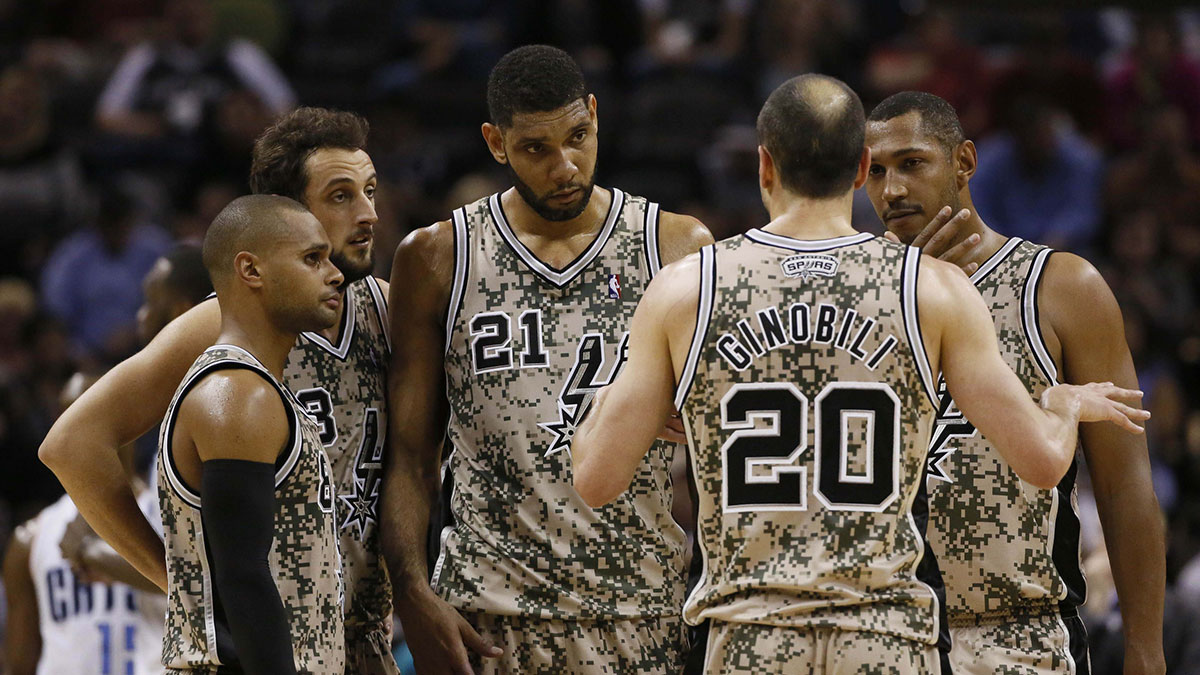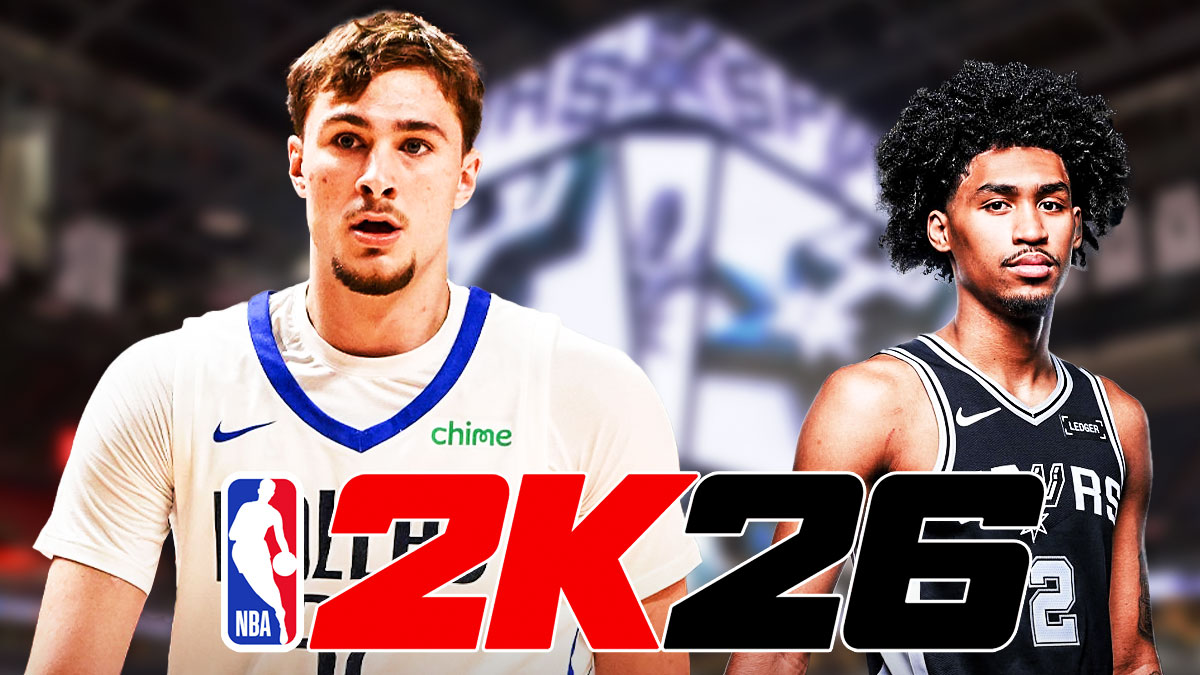San Antonio Spurs youngster Victor Wembanyama is the hottest prospect right now in the NBA card market. As the most hyped rookie ever since LeBron James arrived back in 2003, the attention he’s getting from collectors and investors alike has been massive.
Just recently, a one-of-one autographed Wembanyama card from the 2022-23 Bowman University Best of ’22 set sold for $67,333 at Goldin. Wemby wasn’t even in his official pro uniform yet, but his cards are already fetching quite the money.
:// Generate —> #CardLadder #EyeCatchingSale
Eye-catching Sale: The 2022 Bowman University Best Victor Wembanyama #BOA-VW Best Of 2022/23 Autographs Superfractor 1/1 PSA 8.5/Auto 10 sold for $67,333.20 via auction with Goldin on August 30, 2023.https://t.co/Hm3UflZCyb pic.twitter.com/TS1S9nV2og
— Card Ladder (@CardLadder) September 1, 2023
Of course it’s a good sign for the industry overall. After the Zion Williamson hype during the pandemic and as the prices correct itself, the hobby could really use an injection of life. It wouldn’t be bad at all to see new bloods starts collecting NBA cards as well and reinvigorate the overall interest in it.
Sure enough, hopes are high that Wembanyama’s arrival is the catalyst that the card market needs to grow even further.
Fortunately, according to Netflix star and Goldin Head of Revenue and Sports Consignment Dave Amerman–who starred in the “King of Collectibles: The Goldin Touch”–that could very well be the case. In an exclusive interview with ClutchPoints, Amerman discussed the recent Victor Wembanyama card sold by Goldin and how he can impact the industry.
Amerman also talked about the current state of the NBA card market, and offered some advice for collectors and investors on how to make the most of their collection.
CP: Can you tell us more about the Victor Wembanyama card that sold for over $60,000 at Goldin?
Amerman: Yes, absolutely. This was the university Superfractor, which he inscribed, I believe it was “first ever” or “my first ever.” Yeah, that's cool in itself. That's unique. You don't see that. I love that these athletes are starting to do things like that. The athletes have made it more fun, too. Obviously, a big guy like Victor Wembanyama doing that is one thing.
Now you've seen some of these guys who are lesser known, they'll write something underneath it, like “I hope you find this.” They start writing messages to the collectors now.
Now you have a guy like Victor who is the No. 1 prospect that we've seen since LeBron writing things like my first. That's going to add a nice premium value as well. But obviously [the card] being the Superfactor, that's a unique item as well because we haven't seen a lot chrome cards in a little while here in basketball.
CP: Did the Victor Wembanyama card exceed your expectations when it comes to its sale?
Amerman: That's a tough question. I think there's people that thought [it would go] 100K. I think you look at the Arch Manning sale and you think, okay, Victor Wembanyama is going to sell for that. Now I realize that he has other cards that are desirable a little bit as well, too, this one probably being the most. I think the key difference between this card and the Arch Manning card is that the Arch Manning was truly his first card. He probably won't have cards for several years to come, or at least if he does, it's going to predate his rookie season substantially, as opposed to this card where Victor is going to have rookie cards coming up in the next six months or 12 months. So I think that might have affected it a little.
I personally wasn't going into this card thinking it was going to be hundreds of thousands of dollars. I thought if we could get to 100K, that would be a very good result. I think the seller, actually I know the seller was pleased with the result.
… I think it was the right move to sell soon, but I think the price leaves a little room for the buyer as he comes out and plays. I don't think anyone's doubting that this guy is not going to be a great player. If he gets hurt or something, that could certainly be a tough purchase. But if he comes out and does what people are expecting, that actually I think would be a good buy. I think it was a fair deal on both sides.
CP: Speaking about Victor Wembanyama’s projections and future, what is the potential of his cards in terms of price? We all know the current state of the hobby compared to the pandemic days, during the Zion Williamson hype. I, myself, predict that there would be some kind of boost because of Wembanyama's arrival. Do you see that as well?
Amerman: I think he's great for the NBA card market. I think everybody wants to find that next superstar, that next big thing. I collected LeBron out of the gate in '03, and I think everybody that did was rewarded handsomely for that. He was such a sure-fire thing, and he just stayed with it.
I think the Zion case is an interesting one, and some of the LaMelo Ball could be another comparison. Right now, granted, Zion might have been pretty highly touted. He wasn't Wembanyama, and, well, Melo wasn't even close. And those were some of the bigger guys in the draft. Victor is head and shoulders when it comes to rankings and projections to be far better than either of those.
So, Zion obviously, the injuries really derailed his value. Personally, I think we're going to see a nice pop on Zion if he can stay healthy here. Every time he's on the court, his values go back up. But I think collectors are going to be more reserved because it was really the Wild West of spending in 2020 and '21, people just buying all the Zion you could buy and everybody making money because they just kept going up.
I think people who have participated in that have now realized, “Wow, I lost some money on Zion as well.” I think that once you start losing a little money, you get a little more reserved. If every deal was as easy as buying the big name and he comes out and plays well and you make money, then everyone would do it, which is why these cards get to as high as they do anyway.
But I think he's [Victor Wembanyama] probably a long stay in the NBA. I think he's going to be an All-NBA player and potentially MVP-caliber. There's never been another player built like him. I mean, he's [a] 7-foot-5 Kevin Durant. … It's really insane when you think of his potential. I know a big man, their careers, it's hard to keep them healthy. [But] if he can stay healthy, he could be worth every bit of the investment. With LeBron, just because people spent a lot when he came out of the gate, they were rewarded handsomely down the road. This could be a similar situation.
CP: You mentioned about big men not getting a lot of love in the hobby. I have to agree. We get to see it with Tim Duncan’s cards not being on par with other modern-day cards of players of lesser stature. With Victor Wembanyama coming in, do you see him changing that perspective?
Amerman: Okay. As big as he is, I don't look at him like your big man, right? I think the big man is seen as a defender, a rebounder. I don't see him as a guy with shooting ability. Like Durant, we don't necessarily consider it a big man. I think we don't look at him the same as a [Nikola] Jokic or a Duncan even. Even though Duncan could have a nice shot and moved around a little bit, I just think they're going to look at him more like a Durant, more like a shooter, as opposed to just a big center. I think that his values will be different because I think he's got the skills as well as the size. I think that's important.
CP: Do you have any advice for collectors or for those who are looking to invest in Victor Wembanyama? We know there's always two sides to the hobby. There's the collectors and there's the so-called investors. The card market, most of the time it's speculative investing. But what are your projections for Wembanyama in an investor’s perspective?
Amerman: I think there's going to be a strategy involved, and I could certainly get into some interesting strategies. Part of the strategy is, you know, he's hot now and as new products come out, some of the older products go down a little bit. But as he comes out and plays and performs well, there is a nice increase. My thought is if you need to get in early, get in on a bunch of options early: sell some of them, keep some of them.
Diversify the strategy, not everything is just a long-term hold, because if he comes out and gets injured, you almost have no choice but to hold another season. But if he comes back and gets injured again or has a bad season, then you're going to just continue to go downward. So I like to invest in a player and I invest enough where I can sell some earlier and then hold on to some. And as he has a hot week, sell a few others.
I think you have to be buying and selling and averaging your cost so you can buy and sell at the right times. I think that's one strategy. And then I think you have to look at the product that you're going after.
CP: You also talked about going to public auctions. I think one of the primary barriers for collectors and investors is the ease of entry. Can you give us an idea on how collectors can go to public auctions and have their card assessed or submitted if they want to sell through an auction house like Goldin?
Amerman: Yes, absolutely. I see this a lot too in the people that aren't mainstream collectors that just happen to hit a break. They go into these groups and they post on the social media. And a lot of times people will say, “Oh, try Goldin and go here, go there with it, go to these auctions.” And a lot of people will give them advice. Typically it's hard. It's hard to tell. The easiest way that a rookie collector can find where to sell is to look to see where the highest cards are selling and look to see what platforms that were used.
I would recommend a value source. Card ladder is a great source to find comparable sales, past sales history. eBay is probably not a great source in the comps because they only go back 90 days or so, and then that's on eBay's pricing. I like CardLadder because, in the PSA registry as well where you find the comps and the PSA graded cards, then you can see the last sales and you can see which auction houses sold them. So when you look there, you can actually find who's selling them for certain prices.
I think a lot of people come to us that way. They Google a similar card that they have and they see that we sold one for a record price, and then they'll call us. So I would recommend doing a little bit of education. I realize on a one of one, it's hard, but it doesn't have to be. Find a close comparison. Find a red number to five. Maybe there's one of them out. Maybe an orange number to 25, there's a few. And then you can use some simple mathematics to say, “Well, the red is five times rarer than the orange, and the one of one is five times rarer than the red. So this should be really worth X or Y.” And some of that math actually holds up, not always. But yeah, I think just doing a little bit of due diligence to see which platforms are getting the best prices on the items.
And then as far as reaching out, we [in Goldin] are happy to speak to someone who's got a big card and looking to sell. So finding us, getting in touch with us is very easy. Nowadays, too, people can find consignment directors for a company on social media if they want to look around and see. We have a page of experts on our website as well, where you can actually see our social handles, and you can look and see, “Okay, this guy focuses on that area, this one. Maybe I'm a good fit with this person.” I'm just trying to find the right director for you. I think that's important, too, because it's very important to make sure that our wants and our needs are aligned. If the desire is, “Let's quickly sell the card and get the most money for it,” that's one plan. If the next plan is, “Well, hey, let's time this right. Let's wait for his debut. Let's wait to sell it for when the season ends or when the playoffs start.” Timing is very important. Also, if you sell it when he's injured, maybe sell it around the All-Star break.
CP: Final question, in general, what’s your take on the current NBA card market today and what will it be moving forward?
Amerman: Having looked at the card market going back as far as the '70s or even that's about the first time you start getting some documentation really outside the earlier days, it's been going up. It continues to go up. Way back in the early 2000s, [a] 100K item was a record breaker. “Oh, my goodness. Can you believe that that went for 100 grand? Can you believe that Honus Wagner went for hundreds of thousands?” Then it's a million dollars. “Can you believe this card?” Now it's $10 million.
I think it's just like the housing market. There will be ups, there will be downs, but it will continue to go up just like inflation, just like anything else. … I think the card market in general, like you said, if I'm investing in blue chip, Hall of Fame, rookie players, PSA 10 [cards], I feel like you're going to be in great shape in the long run. So if you try to time it, it's going to be difficult. You might do well, you might not. As they all say, it's time in the market, not timing the market. You can make some money timing everything, but you can do a lot better in the long run if you just feel good about the market and you're willing to wait.
Editor’s note: Some quotes are edited for brevity and clarity.

